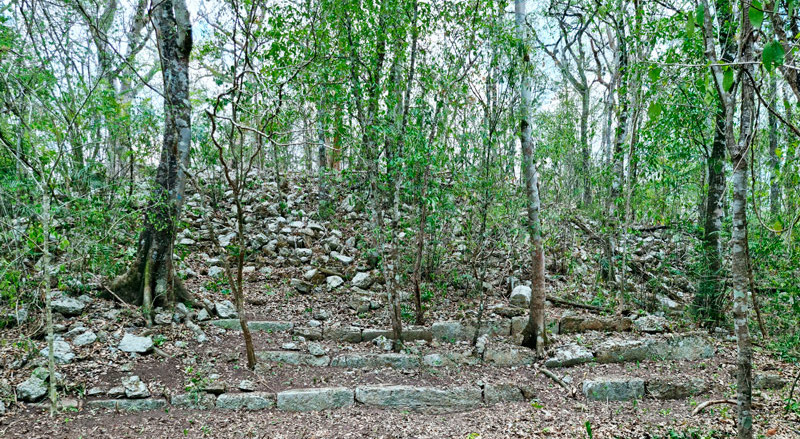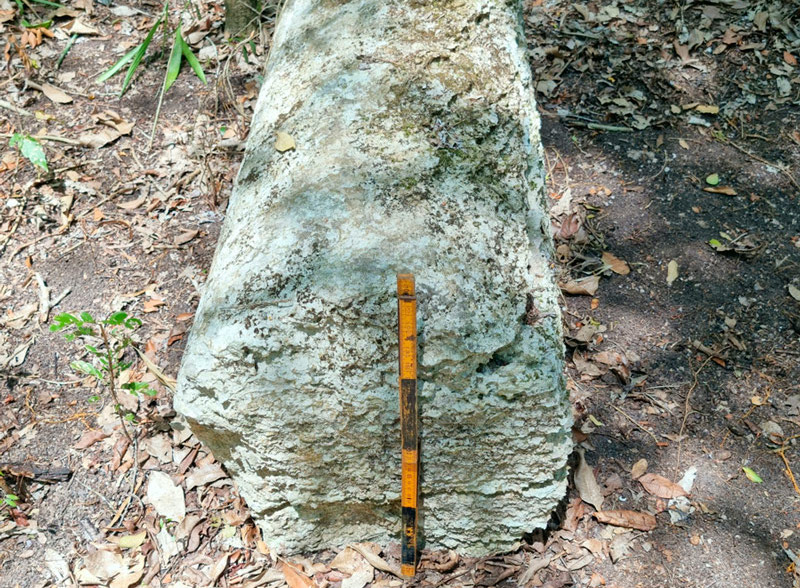


Posted on 06/21/2023 4:09:48 PM PDT by nickcarraway
A team of archaeologists has made a discovery in Mexico, where they have uncovered the remains of a long-lost Maya city hidden within the dense jungle of the Yucatán Peninsula.
Upon further investigation, these experts have come across multiple structures that resemble pyramids, towering over 15 meters (50 feet) in height. The archaeologists have given the site a name: Ocomtún, which means “stone column” in the Mayan language.
The Maya civilization is one of the most remarkable societies in the Western Hemisphere. They gained renown for their majestic pyramid temples and grand stone structures, which once adorned the regions we now know as southern Mexico, Guatemala, and Belize, reported BBC.
The recent discovery of these ancient remains took place within an ecological reserve situated in the state of Campeche. This particular area, characterized by its dense vegetation, has remained largely unexplored until now.
Use of ‘airborne laser scanning’ Staircase Building Staircase Building. Credit: INAH The National Institute for Anthropology and History (INAH) in Mexico has revealed that the recent finding of the ancient Maya city was a direct outcome of extensive fieldwork dedicated to documenting the archaeology of the Central Maya Lowlands. This vast region encompasses approximately 3,000 square kilometers of uninhabited jungle.
Grecian Delight supports Greece The INAH has highlighted the crucial role played by airborne laser scanning, conducted by the University of Houston, in aiding the research team’s efforts.
This advanced technology enabled the team to identify numerous clusters of pre-Hispanic structures that had previously remained concealed within the jungle.
The team, led by Ivan Sprajc, expressed their surprise at the unexpected finding of an elevated landmass encircled by wetlands during their exploration. The discovery of this elevated terrain stood out as a remarkable revelation.
Upon closer investigation, the researchers came across a series of substantial structures situated on this elevated land. Moreover, among them were a notable collection of pyramidal shapes, reaching a height of 15 meters.
Changes in Lowland Maya civilisation Ocomtun Column Ocomtun Column. Credit: INAH Mr. Sprajc, in a statement issued by INAH, emphasized that the site held significant importance as a regional hub during its prime. It would have served as a crucial center for various activities and interactions within the surrounding area.
Furthermore, the cylindrical stone columns, which captivated the researchers and led to the naming of the site as Ocomtún, likely functioned as entrances to rooms located on the upper levels of the buildings.
As per Mr. Sprajc’s analysis, the site experienced notable transformations between 800 and 1000 AD. These changes occurred during a period preceding the eventual decline and collapse of the Lowland Maya civilization in the 10th Century.



If you are going to lose a city, I guess leaving it in a jungle is fairly believable.
Lost? Why didn’t they use Waze?
Stone Column?
Maybe they called it Mayaberry...
I some times lose my car keys in the house. But a whole city??? Yeow!!
How close is it to Chichen Itza????
Something in the water, in that part of the world, I guess.
Did they clear? That jungle in the color photos doesn’t look very dense.

Do you have the directions?
Its mine.
Still not the Lost City of Zed.
Wasn’t that suppose to be in Brazil?
And even those civilization slipped a time or two when things got bad.
Humans are an odd bunch.
Yes.
I’d be more impressed if it were found than another Mayan city.
Thanks nickcarraway.
Build the wall...
Hondurans see little hope for nation’s prisons as details of cold-blooded massacre emerge
Nice.
And this were the women!
Disclaimer: Opinions posted on Free Republic are those of the individual posters and do not necessarily represent the opinion of Free Republic or its management. All materials posted herein are protected by copyright law and the exemption for fair use of copyrighted works.